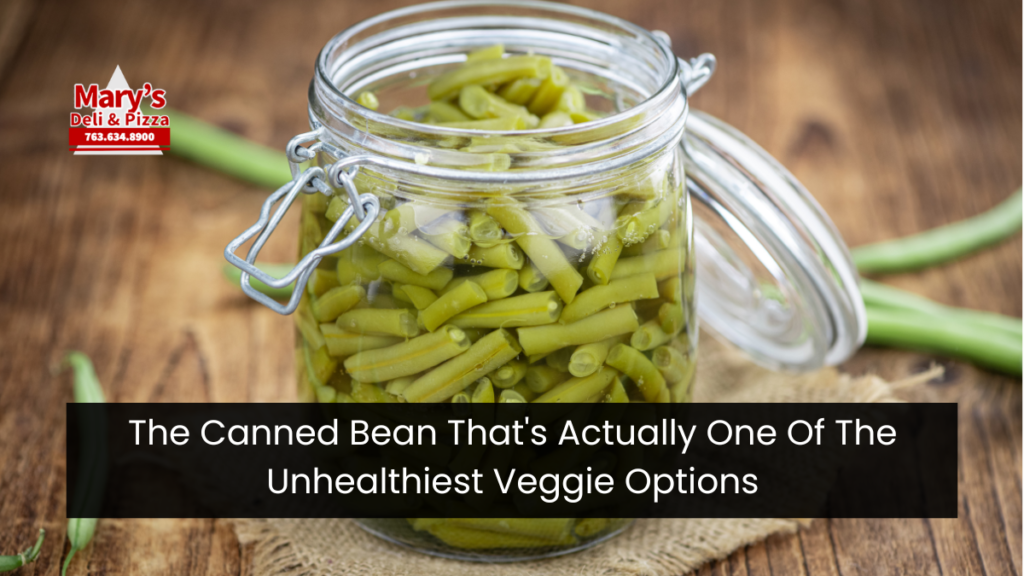Canned vegetables are a staple in many kitchens, thanks to their convenience and long shelf life. They’re easy to store, quick to prepare, and offer a fast way to add vegetables to your meals. Among these, canned green beans are a popular choice, often featured in holiday casseroles or served alongside dinner favorites. While they might seem like a healthy option, canned green beans may not be as nutrient-packed as they appear.
Although green beans naturally offer a wealth of health benefits—rich in fiber, protein, and antioxidants—the canning process can significantly reduce their nutritional value, particularly when it comes to sodium content.
The High Sodium Problem With Canned Green Beans
One of the biggest concerns with canned green beans is the high sodium content. Sodium is added during the canning process to preserve the beans’ freshness, enhance flavor, and prolong shelf life. While this might make canned green beans more convenient and flavorful, it comes with a downside—excessive sodium.
In just half a cup of canned green beans, you can consume up to 380 milligrams of sodium, which accounts for roughly 16% of your recommended daily intake. While 16% may not seem alarming on its own, it’s easy for sodium to add up throughout the day, especially since many processed foods and snacks are also loaded with salt.
According to the Centers for Disease Control and Prevention (CDC), Americans consume an average of 3,300 milligrams of sodium daily—well above the recommended limit.
The Health Risks Of Excess Sodium
Consuming too much sodium on a regular basis can have serious consequences for your health. Excess sodium intake is closely linked to an increased risk of cardiovascular diseases, which are among the leading causes of death in the United States.
Over time, a high-sodium diet can contribute to high blood pressure, heart disease, and stroke. Even a small serving of sodium-laden green beans can contribute to these risks, especially when combined with other high-sodium foods in your diet.
Healthier Alternatives To Sodium-Packed Canned Green Beans
The good news is that you don’t have to give up the convenience of canned green beans entirely. There are several ways to reduce your sodium intake while still enjoying the benefits of this vegetable.
- Opt for Low-Sodium or No-Salt-Added Varieties: Many brands now offer low-sodium or no-salt-added canned green beans. By choosing these options, you can enjoy the nutritional benefits of green beans without worrying about excessive salt intake.
- Rinse and Drain Canned Green Beans: If you’ve already bought regular canned green beans, you can reduce their sodium content by draining and rinsing them thoroughly. According to research, this simple step can reduce the sodium levels by up to 9%. While this may seem like a small reduction, every bit counts when it comes to improving your diet.
- Home Canning as an Alternative: If you have the tools and knowledge, home canning is a great way to control the ingredients in your canned goods. By preserving green beans yourself, you can limit or eliminate the amount of salt used, resulting in a healthier product.
- Cook Fresh or Frozen Green Beans: Of course, the easiest way to avoid excess sodium is to prepare fresh or frozen green beans at home. Fresh green beans allow you to control the seasoning, giving you complete control over both flavor and texture. They’re also a more nutritious alternative, providing the same health benefits without the need for added sodium.
Why Fresh Green Beans Are The Better Option
When compared to canned green beans, fresh or frozen green beans offer a healthier, nutrient-rich alternative. They retain more of their vitamins, minerals, and antioxidants while avoiding the added sodium that comes with the canning process.
Plus, when cooking fresh green beans, you have complete control over the ingredients and cooking methods, allowing you to create dishes that are not only healthier but also tastier.
Conclusion:
While canned green beans may seem like a convenient option, their high sodium content makes them one of the unhealthiest vegetable choices. The good news is that you don’t have to eliminate green beans from your diet altogether.
By opting for low-sodium varieties, rinsing and draining canned beans, or preparing fresh green beans, you can enjoy the nutritional benefits of this versatile vegetable without the negative impact of excess sodium. Make smarter choices and consider fresh or frozen green beans as a healthier alternative to their canned counterparts.
FAQs
1. Are Canned Green Beans Bad For You?
Canned green beans aren’t necessarily bad for you, but they can be high in sodium, which can contribute to health risks like high blood pressure. Opting for low-sodium varieties or rinsing them can help reduce sodium intake.
2. How Much Sodium Is In Canned Green Beans?
A half-cup serving of canned green beans can contain up to 380 milligrams of sodium, which is about 16% of the recommended daily intake.
3. Can I Reduce The Sodium In Canned Green Beans?
Yes, you can reduce the sodium in canned green beans by draining and rinsing them before cooking. This can lower the sodium content by up to 9%.
4. Are Fresh Green Beans Healthier Than Canned?
Yes, fresh green beans are generally healthier than canned because they contain no added sodium and retain more of their natural nutrients.
5. What Are Low-Sodium Alternatives To Canned Green Beans?
You can choose low-sodium or no-salt-added canned green beans, or opt for fresh or frozen green beans to avoid excess sodium altogether.



